The Lake District, also known as The Lakes or Lakeland, is a stunning mountainous region in the North West of England. It is also part of literary folklore due to the region's popularity among romantic poets. It is a UNESCO World Heritage Site which is a must-see for anyone traveling to England. The lakes landscape is stunning green mountain peaks and tranquil lakes. This landscape deeply influenced poets such as William Wordsworth and John Ruskin.
Regions are associated with Lake Poets. The Lake Poets was a group of English poets who lived in the Lake District in the 19th century. While the poets associated with the region are not a distinct school of literature, they are primarily romantic poets. 'Lake Poet School' as a label was a critique of that Edinburgh review should first be used . At the time, critics made fun of these overly romantic, sentimental, and dramatic poets who became lyrical about the lakes.
Preliminary figures for Lake School are William Wordsworth, Taylor Coleridge and Robert Southey. They are the most famous or popular poets of this group. In addition, Dorothy Wordsworth, Charles Lamb, Mary Lamb, Charles Lloyd, Hartley Coleridge, John Wilson and Thomas De Quincy are part of Lake School. In addition, the famous English children's author and artist Beatrix Potter lived in and wrote about the Lake District. The history of the Lake District is intertwined with this literary history. If you visit the region today, you can learn something about this famous group of writers.
Lake District and Romantic Poetry
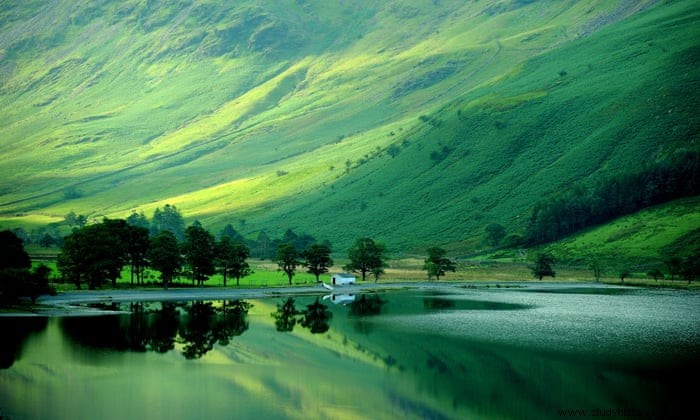
Romantic poetry is poetry from the Romantic era. It is an artistic, literary, musical and intellectual movement that originated in Europe in the 18th century. It is a reaction to the dominant Enlightenment ideas for most of the 18th century.
The Age of Enlightenment was a philosophical and intellectual movement called the age of reason. In addition, the scientific revolution inspired this era. The focus was on pursuing knowledge, reason, scientific inquiry and equality. In addition, ideas such as separation of church and state were dominant.
The romantic movement returned to a resurgence of sentimentality, nature, mystery, imagination and emotion. Besides, the idea of the sublime was the most important. The Sublime is a feeling of both awe and fear of nature. The brutality of nature inspired a sense of wonder and beauty.
Moreover, from a literary point of view, the poets would feel their authorship. The romantic poets wanted to evoke emotions instead of emphasizing the pure intellectual authorship that the Enlightenment encouraged. The romantic poets wanted the reader to feel awe, imagination and emotion and often used powerful language about nature.
Wordsworth and The Lakes
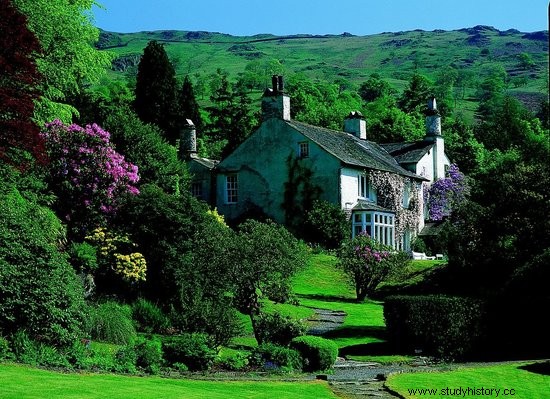
William Wordsworth is the most famous poet in the Lake District. Wordsworth lived in a small cottage in the district. He was also responsible for introducing Coleridge to the region and often took him on great trips around the lakes. Wordsworth's cottage had once been an inn in a small village. Although Wordsworth never named it, it is now known as Dove Cottage. The cabin is now a popular place for visitors to see where the poet lived and drew inspiration.
Wordsworth only lived at Dove Cottage for eight years. Although this is not long, the cottage is forever associated with his name. Maybe this is because he produced some of his most famous and enduring works while he was there.
Wordsworth's sister Dorothy also lived in the cottage with him. He was very close to Dorothy, and they often spent hours walking together. Thanks to Dorothy's journals, we have many descriptions of their daily life in the Lake District. Her journals also provide insight into the thoughts and processes behind their poems.
At first it was just William and Dorothy at the lodge. In addition, their childhood friend, Mary Hutchinson, whom Wordsworth was to marry in 1802, often came to stay, taking her sister, Sarah.
Coleridge and his family followed Wordsworths to the Lake District and rented Greta Hall, in Cumberland. He was also a frequent and welcome visitor, although his visits involved a 13-mile walk over a steep mountain pass.
Coleridge left Greta Hall in 1803, and the poet Robert Southey moved in. Southey and Coleridge were married to two sisters. Despite this, they fought a lot. However, they had a mutual friend in Wordsworth. So they have all been named together as 'The Lake Poets'.
What the Lake District Represents
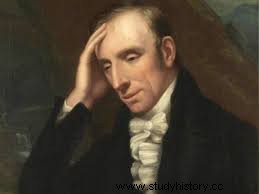
Romanticism was a pressure on the Enlightenment ideals, and its emphasis on the return to nature was crucial to Wordsworth. He loved the Lake District because of its pristine, old-fashioned qualities. As a result, as the Lake District became more populous and felt the effects of the Industrial Revolution, he spoke out against it.
For example, he opposed the planting of regimental lines with larch. In addition, he was against the introduction of railways. When industrialists began building large, magnificent houses in the area, Wordsworth also opposed this. His concern was also about how these changes would affect society in the region, especially the poor.
Radical political ideas inspired Wordsworth and many of the early Lake poets, which was also a large part of their writing. Wordsworth wanted to use the 'ordinary language' of the 'ordinary man'. His wish was that his poetry should be accessible to all and not be full of the complex flourishing language of the upper class. Instead, the subjects of his poems were often only men and women, rather than men or women. He wrote about ordinary people as well as for them.
The Lake District Poems

Despite the importance of Lake Poets as a group, Wordsworth is the most famous and central poet of this period. He is also the most famous in popular culture. No doubt at some point you have heard his famous poem entitled "I wondered lonely as a cloud" sometimes called "the daffodils."
"I walked alone like a cloud. It floats on high oals and heights, When at once I saw a multitude, A host, of golden daffodils; Beside the lake, under the trees, Fluttering and dancing in the breeze. Continuous as the stars shining And twinkling on the Milky Way, They stretched in infinite line, Along the edge of a bay:Ten thousand saw me with a glance, Throwing their heads in resilient dance.The waves beside them danced; but they surpassed the glittering waves of joy:A poet could not but be gay, In such company:I stared - and stared - but thought littleWhat richness the performance had brought me:Too often, when I lie on my couchIn free or in a pensive mood, They blink in the inner eye Which is the happiness of loneliness; And then my heart fills with joy, And dances with the daffodils. 'John Ruskin
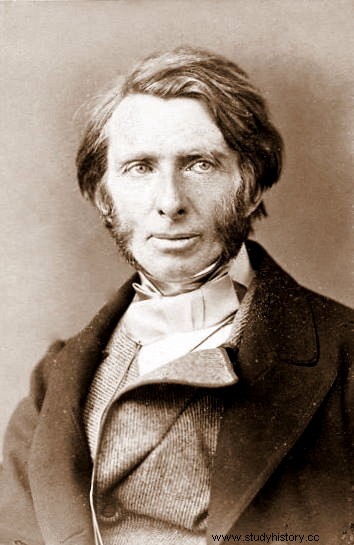
Although John Ruskin is not as well known in popular culture, he is as central and important a Lake Poet as Wordsworth. Also, Ruskin lived in the Lake District most of his life. Known primarily as an art critic, he was also a painter in his own right and a poet, creator of fairy tales, social commentator, conservationist and social justice advocate.
Ruskin's broad interests included geology, architecture, meteorology, and religion. His writings on nature and politics, in particular, would have a significant impact on modern British society.
Ruskin lived in many places, but eventually settled in the Lake District and made it his permanent home. He found the region genuinely inspiring. You can visit his home, Brantwood, in the Lake District today. In his house you can also see a collection of his paintings and personal belongings.
Beatrix Potter
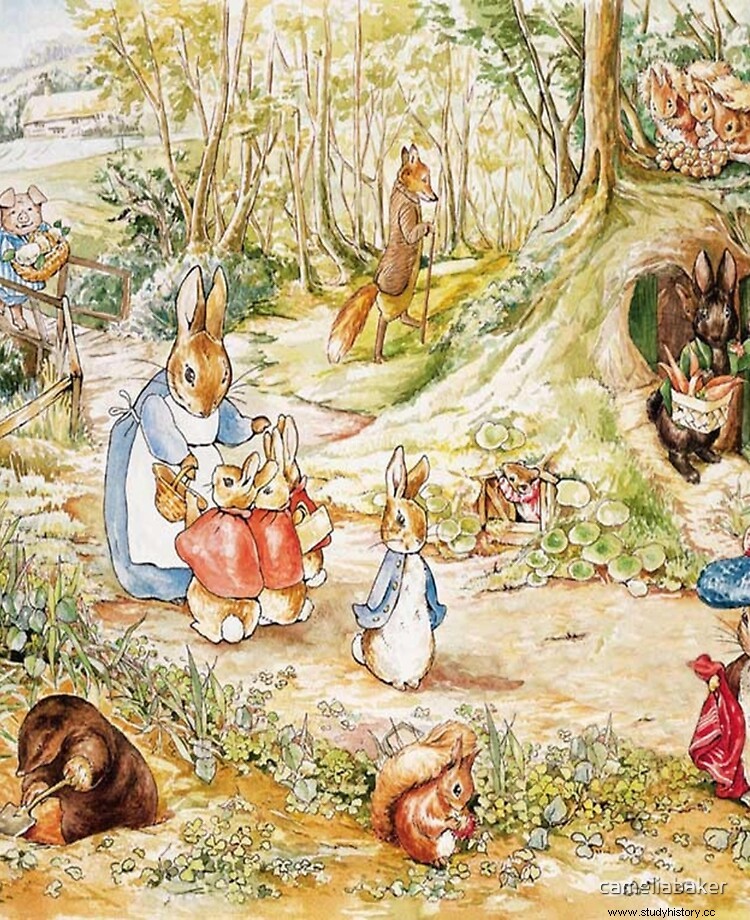
Beatrix Potter is a beloved English writer and artist. You may know the children's characters Peter Rabbit, Benjamin Bunny, Mrs. Tiggywinkle and Jemima Puddleduck. She has written some of the most famous children's books of all time. In addition, she illustrated her work. Her illustrations and works of art are as well known and loved as her stories.
Potter had a lifelong love for the Lake District. She started taking family vacations there from the age of sixteen. Beatrix spent many summers in the Lake District, living at Lingholm and Fawe Park near Derwent Water. During her stay there, she began writing picture stories for young relatives and acquaintances, including a story about a mischievous rabbit named Peter. Derwent Water's landscapes inspired some of Beatrix's earliest and most beloved stories. The stories of Ekorn Nutkin, Benjamin Bunny and Mrs. Tiggy-Winkle are rooted here, the distinctive landscape serves as the background for Beatrix's illustrations.
In 1905, Beatrix used the proceeds from his first book, The Tale of Peter Rabbit , to buy Hill Top, a small farm in the village of Near Sawrey. Beatrix made regular trips here from London, filled it with memories, antiques and paintings and looked after the cottage garden. Potter came to Hill Top to write and paint, and she used the house itself and the surrounding landscape as inspiration for many of her books.
Not only was she a beloved author and painter, but also a conservationist for the area. She worked with the National Trust to protect farms and parks from development. Potter's paintings, primarily watercolors, were strongly inspired by the Lake District landscape. In addition, the background for many of her children's book illustrations has the district's mountains.
Why is the Lake District so popular today?

The Lakes has become a very popular place for visitors from both the UK and internationally. The Lake District is not only a beautiful place, but over time it has also come to represent exactly what the Lake Poets emphasized about it. People are often attracted to The Lakes for its calm quality, romance, remoteness and sense of another time. Visitors will often go to "return to nature" as the poets did. Undoubtedly, this is partly due to their literary heritage and love of the region.
In the literary canon, the Lake District represents a sanctuary where people can go to escape the harsh realities of industrialization and the rapid pace of the modern world. Due to the authorship and preservation of Lake Poets and Beatrix Potter, the region has maintained this quality.
The legacy is so strong that The Lakes are often referred to in popular culture. For example, Taylor Swift's 2020 album, Folklore, properties The Lakes. In this song she sings about being inspired by the quiet loneliness of Lakeland; ' take me to The Lakes where all the poets went to die.' Later in the song she also sings, ' a red rose grew up from ice-frozen soil, without anyone being able to tweet it.'
These texts express what The Lakes represent in modern popular culture. In a world of mobile phones, technology and constant change and progress, the Lake District represents a return to the tranquility of nature. It also refers to the concept of nature in opposition to society.
Cultural significance
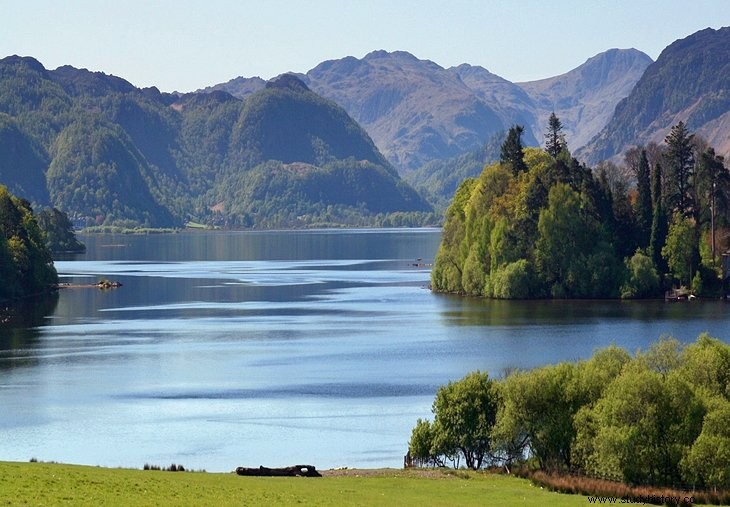
The Lake District has now been a UNESCO World Heritage Site since 2017. It is culturally important not only for its literary history, but also because the region represents a typical English landscape and is culturally very English.
This landscape reflects a unique common agricultural system. The farming community has persisted for at least a millennium with improvements to villas, picturesque plantings and gardens during the 18th and 19th centuries. This combination has attracted and inspired writers and artists of global size. The landscape also manifests the success of the conservation movement as it stimulated, a movement based on the idea of the landscape as a human response to our environment.
The diversity of the landscape is the key to its beauty and significance and includes the coast, lakes, distinctive agricultural land, mountains, forests, industrial activity and settlement. Each of the thirteen valleys in the Lake District has an individual character based on landform, biodiversity and cultural heritage. The character of the Lake District cultural landscape has evolved slowly over many centuries. It will continue to grow in the future under the influence of the knowledge and skills of the local community.
Not only is preservation a primary reason why it is important, but also feeling and literary history. As people wander around the Lake District, they take on the spirit and atmosphere that attracted the poets and writers who lived there. You could say that the spirits of Wordsworth, Ruskin and Potter are still very much present in the landscape. Both in their authorship and in their preservation and defense of the landscape.
